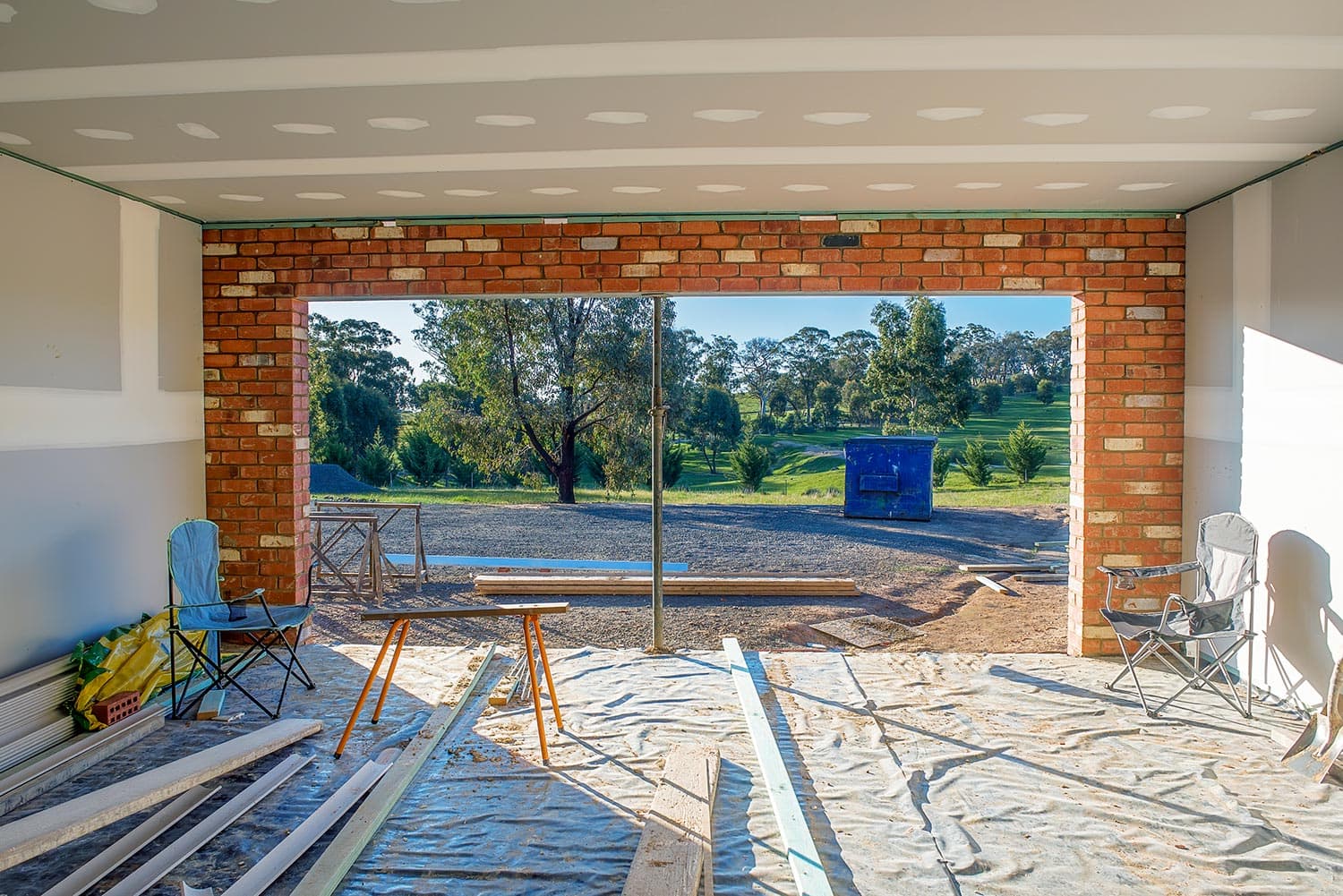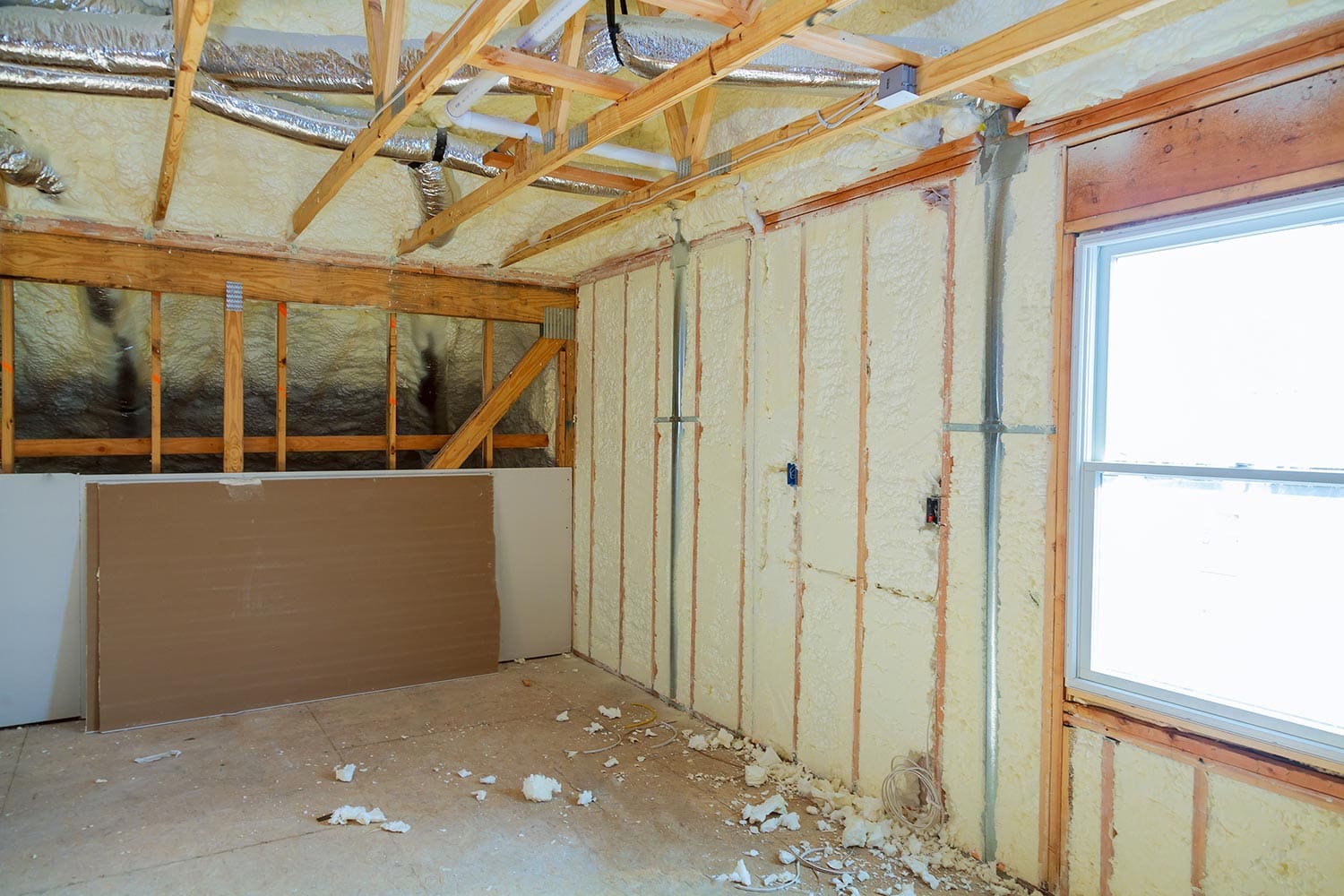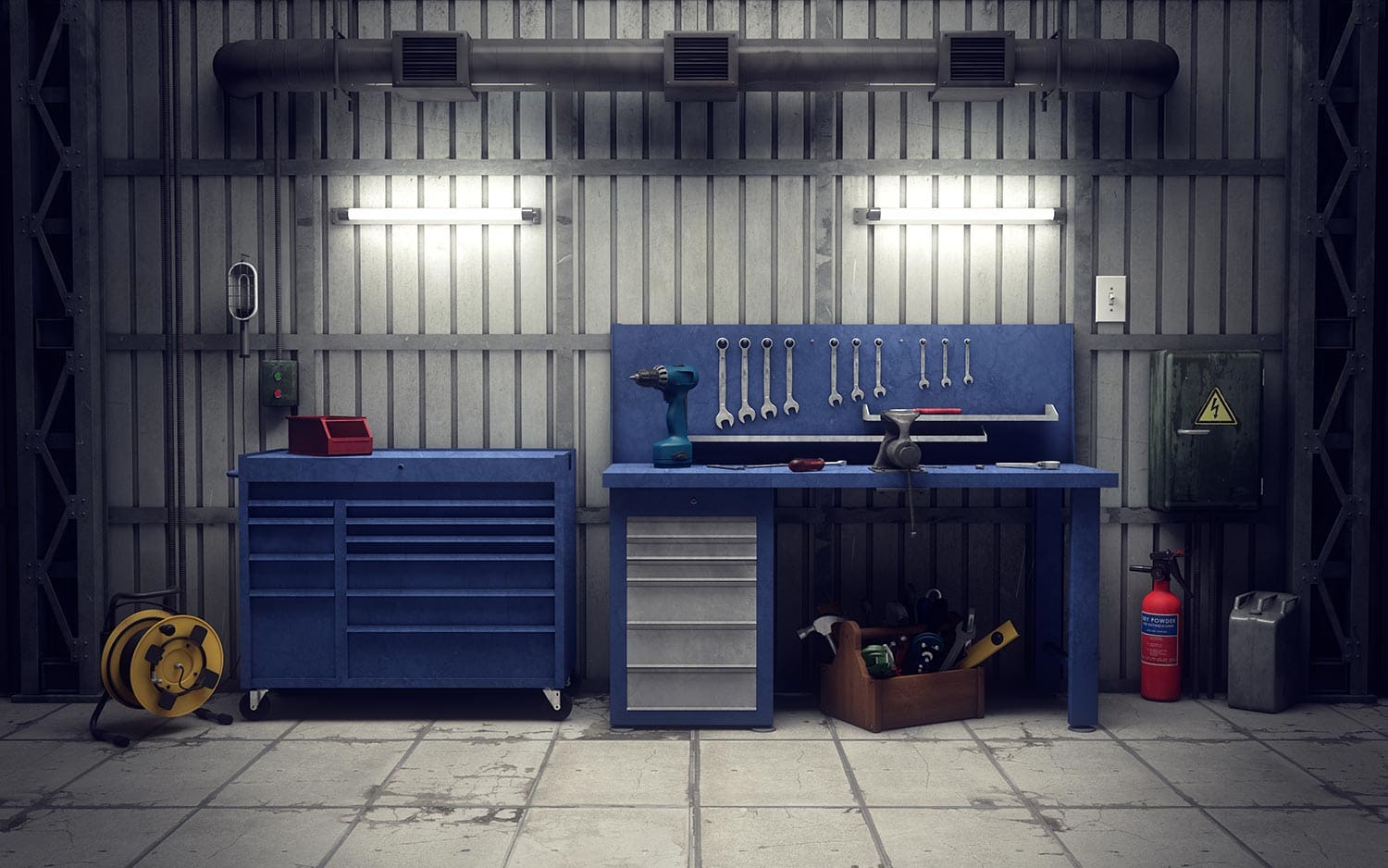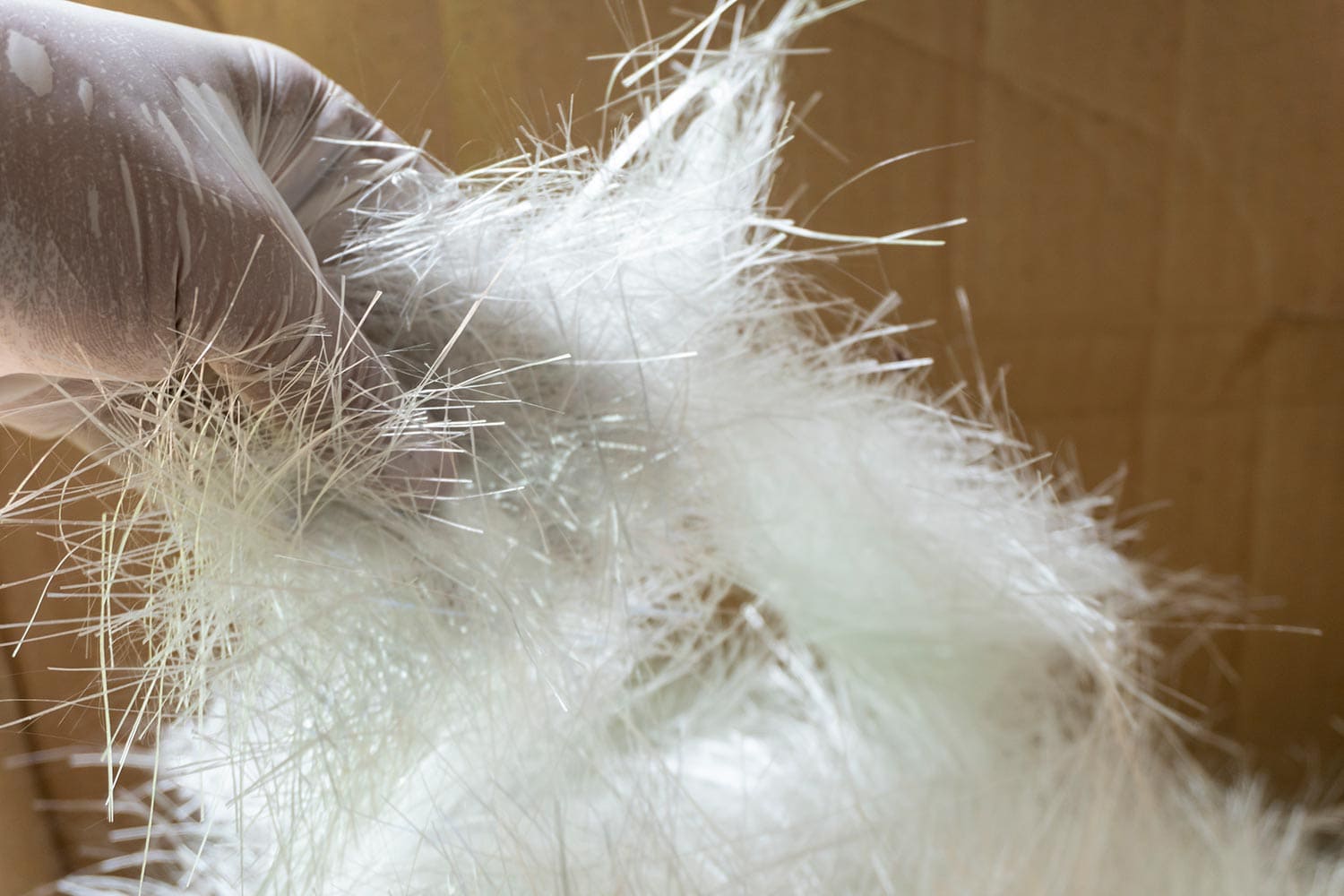Your garage is an integral part of your home. It is the perfect space to store all your essential items, from vehicles to bikes and gardening tools. A well-insulated garage can help protect your belongings from extreme drops in temperature and humidity. As a homeowner, you might be wondering how much to budget for garage insulation. To help with your question, we asked experts on the subject, and here's their response.
On average, the total cost of insulating a garage is about $1,500. However, each garage varies in size and structure. It might cost a total of $0.50 to $1.25 per square foot, meaning that two-car garage owners should be prepared for a price between $350 to $850.
Why should you care about insulating your garage? What type of insulation should you be interested in, even if it is worthwhile? Keep reading as all these points are elaborated in this article.

Cost of Insulating a Garage
The size of the garage in question, number of automobiles, and type of vehicle can all determine the cost of insulating a garage. Here is an in-depth explanation:

Cost of Insulation by Garage Size
Most garages come in a variety of sizes, dependent on the number of cars they can accommodate and what the owners want to do with the space.
Insulating costs vary, as do property prices, type of insulation used, and how insulation material is used. As previously stated, insulation costs between $0.50 cents to $1.25 per square foot. However, you may insulate the whole garage or only the walls, ceiling, or door.
If your garage accommodates three cars, it implies that the floor's total surface area would be around 240 square feet multiplied by three cars. That would also be considered when calculating the amount of material used per square meter of the walls.
Cost of Insulation by Number of Cars

So many homeowners measure the capacity of their garages in terms of the number of vehicles they can accommodate rather than the overall square footage. Garages are usually pretty conventional in size, dependent on how many automobiles they can easily house.
When you know the size in square feet, you can easily calculate the insulation cost just like you would a regular house. A one-car garage is 240 square feet in size. If a specific insulating material costs a total of $1 per square foot, a one-car garage would cost a total of $240. The same pattern of calculation goes for a two-car and a three-car garage.
Cost of Insulation by Type
Different forms of insulation may be utilized in a garage, and it is customary to mix and match them depending on where they're installed.
For example, you could use rolls for the ceiling and blown-in insulation for the walls. It is also typical to modify the insulation type depending on whether the sides are open or drywalled and how the area will be used.
What is a Cost-Effective Way to Insulate a Garage?

The cost-effective way to insulate a garage is dependent on several factors. Factors like the materials used, the area, and your terrain go a long way to determine the quality and the amount of money you will likely spend. In terms of materials, the two cheapest materials are fiberglass batt, also known as roll, and cellulose insulation.
Fiberglass batt insulation is simple to unroll and place on horizontal surfaces. It can also be laid behind the walls for vertical surfaces, so it is ideal for garages. Cellulose insulation is recyclable loose-fill padding that can be injected into sidewalls and attics, making it an excellent alternative for completed garages.
Using these two materials in your installation would guarantee you standard insulation if they are correctly installed.
Importance of Garage Insulation

As one of the most frequently used places in the home, your garage must be in good condition; this is especially true if you use it for storage. In addition to the improved condition, here are other reasons you should insulate your garage.
- Your garage can serve as a comfortable place to carry out different types of work like car repair or construction.
- In a case of a fire accident, insulation prevents toxic fumes from getting into the main rooms and apartments of the homes, especially if your garage is directly connected to the main building.
- In severe humid seasons, insulation can also help prevent rust on metallic materials such as your car(s), your valuable tools, and pieces of equipment.
To properly insulate your garage, you must know what part of the garage can be insulated and which materials to use. The following section discusses that in detail.
Essential Parts of the Garage to Insulate
Here are the most vital parts of the garage to consider for insulation:
- Garage door
- Attic
- Garage wall
- Garage floor
Garage Door Insulation
The garage door can be insulated by fixing insulating materials or replacing it entirely with an already insulated door. If you are going with the first option, i.e., insulation with material, you will need to determine the type of door your garage uses. It could either be steel, a wooden frame, or a flat door.
You will need to get foam made for steel frames for steel doors. This type of foam is specially designed for steel frames. If your garage door is made up of wooden frames, a stiff insulation material should be used, while foam boards are perfectly made for flat garage doors.
Attic Insulation
Decent attic insulation can help reduce the amount of money you spend on heat bills. There are so many materials that could be used to insulate your attic. Those materials include the fiberglass batt, fiberglass roll, cellulose attic installation, and many more. The type of attic insulation you choose would be dependent on how airtight your attic is.
Garage Wall Insulation
This is one of the most vital parts to insulate. Garage walls can exterminate noise or disturbance away from the main building. It is also beneficial to insulate garage walls by using a solid insulating material such as the fiberglass batt rigid foams with a higher R-value per inch of thickness.
The following procedures show how you can insulate a garage wall appropriately:
- Make sure you remove all materials that could hinder you from fixing the insulation material—for example, screw and hooks, wall coverings, and so on.
- Check for void areas, i.e., areas where you see good gaps.
- After identifying these areas, apply a sealant to cover them.
- After doing this, make sure the sealant properly dries.
- Start fixing the insulation materials.
- Make sure that the insulation materials are well-cut.
- After fixing the materials, apply vapor barriers and secure them by stapling.
Garage Floor Insulation
Garage floor insulation is essential if your garage serves a multipurpose function. A well-insulated garage would make all the difference when it boils down to comfortability and energy efficiency.
Types of Insulation Materials for Your Garage

There are many types of insulation materials available. Many of those materials also differ in how complex or simple the installation process would be. Installing some materials require technical know-how, while others are easier to install by following the installation manual.
The following materials can be used as materials for insulation installation. Each one will be discussed in detail:
- Rolls (Fiberglass Batts)
- Blow-in Insulation
- Cellulose Insulation
- Radiant Barrier
Roll (Fiberglass Batt)
Fiberglass insulation is the most widely used kind in garages. It is available as precut batts and long blankets designed to fit between wall studs and ceiling joists. You may also purchase loose-fill fiberglass, which is ideal for blowing into a garage attic area above a completed ceiling.
Using fiberglass batt comes with many perks, but it also comes with some disadvantages, including irritation when exposed to the skin or the eye. It is also known to be susceptible to moisture and, if not correctly installed, might lead to the spread of flame in case of fire accidents.
Blow-in Insulation
Unlike batt insulation, blown-in insulation does not necessitate the demolition of your walls. To start, drill a large hole in the wall and blow the insulation through it. An insulation contractor generally does this unless you know where to rent the required machine. Blown-in insulation is less time-consuming to install, but it is typically more expensive than other forms of insulation.
Cellulose insulation
Cellulose insulation is constructed with recycled paper that has been chemically treated to make it fire-resistant. The material is then blasted into holes and gaps using a blowing machine. Because it is loose-fill insulation, it is only suitable for use on a completed garage ceiling and walls.
In Conclusion
Insulating a garage is one of the most important steps you can take to save energy and money. The insulation also helps keep your home more comfortable all year round.
If you have read up till this point, you might be interested in these similar articles about insulation: "What Natural Materials Should Be Used for Insulation," and "How Thick Should Loose Insulation Be?"
